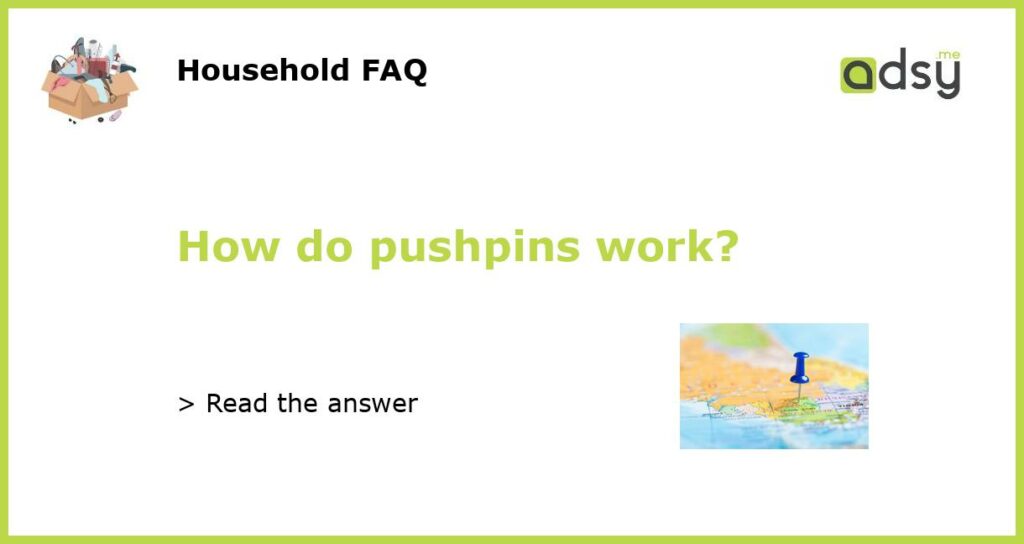How Do Pushpins Work?
Pushpins, also known as thumbtacks or drawing pins, are a common and useful tool used to secure paper or other materials to a surface. They consist of a metal or plastic pin that is pushed through an item and then pressed into a surface, such as a corkboard or bulletin board. The pin is typically sharp and pointed on one end, with a round, flat head on the other end. Pushpins work by using the friction between the pin and the surface to hold the item in place.
The Anatomy of a Pushpin
A pushpin is made up of several key components that allow it to perform its function effectively. The pin itself is the most essential part of the pushpin. It is usually made of metal, such as steel or brass, or plastic. The pin is sharp and pointed on one end, allowing it to easily penetrate paper or other materials. The other end of the pin has a flat head that provides a surface for pressing and gripping.
The head of the pushpin is often larger than the pin to make it easier to handle and manipulate. It comes in various shapes and sizes, including round, square, or even custom shapes. Some pushpins also have decorative heads, making them more aesthetically pleasing.
How Pushpins Work
When using a pushpin, you begin by inserting the pin through the item you want to secure, such as a piece of paper. The pointed end of the pin easily pierces through the material. Once the pin is through the item, you press the flat head firmly against the surface where you want to attach it.
The friction between the pin and the surface is what holds the item in place. The pin creates a small hole in the surface material, allowing it to stay securely in position. The tension from the pin being pressed tightly against the surface prevents the pushpin from slipping or falling out.
Applications of Pushpins
Pushpins have a wide range of applications and can be used in various settings. Here are some common uses of pushpins:
- Message boards: Pushpins are commonly used on message boards, bulletin boards, or corkboards to attach notes, memos, or reminders.
- Maps and charts: Pushpins can be used to indicate specific locations or mark important points on maps or charts.
- Art and crafts: Pushpins are often used in art and craft projects, such as creating pinboards or attaching materials together.
- DIY projects: Pushpins can be used in DIY projects to secure fabric, upholstery, or other materials.
- Organization: Pushpins can help in organizing documents, calendars, or other items on a board or wall.
Tips for Using Pushpins Safely
While pushpins are relatively easy to use, it is important to handle them safely to avoid injury. Here are some tips:
- Keep fingers away from the pointed end of the pin when inserting or removing it.
- Use a designated pushpin tool, such as a safety pin or a small object, to press the pin firmly into the surface.
- Do not use excessive force when inserting the pushpin to prevent it from breaking or bending.
- Store pushpins in a safe place, away from children or pets who may accidentally swallow or injure themselves with the pins.
- Dispose of pushpins properly in a designated sharps container or by securely taping them together.






